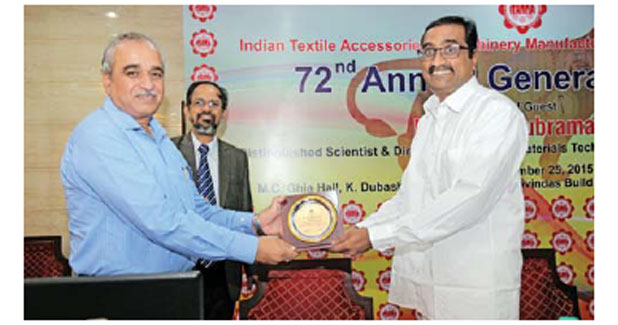
Steps to sharpen tech edge mooted at ITAMMA meet
Technology is a very mature word. What you do little bit in grams or a small differential of a very big integral is not. It goes through many-many levels, about nine levels. The most important thing is what we call as process product integration which is where you use whatever is available and try to see whether the concept works as a product, not as a material. A product has to solve a problem.
Technology is a very mature word. What you do little bit in grams or a small differential of a very big integral is not. It goes through many-many levels, about nine levels. The most important thing is what we call as process product integration which is where you use whatever is available and try to see whether the concept works as a product, not as a material. A product has to solve a problem. The product has a functional performance in a service life, in a service condition over a design life. It is not a material. After that level we go to the next level. We put the service condition and test the product. Then we have to pilot-produce 10 or 20 or 100, try to put a supply chain in manufacturing line. Then we find the defects energy consumption, productivity all those problems we have to solve,´ said Dr K Balasubramanian, Distinguished Scientist & Director.
The Nonferrous Materials Technology Department Centre (NFTDC) during the 72nd AGM of the Indian Textile Accessories and Machinery Manufacturers Association (ITAMMA) in Mumbai. Speaking about many of the hitches that prove to be a huddle on the way of innovation, his speech was filled with in-depth observation and knowledge. He said: ´Finally, the knowledge resides in the manufacturing process equipment and it resides in the product in an implicit form. It resides in the individuals. In between we have to bring it out as explicit form which is what is called technical knowhow or technology. Here we have our cultural problem in our country. The cultural problem we have in our country is, first problem is we need intermediate institutions which mature the technology. The second cultural issue the problem why we failed is our oral tradition. We don´t document. We as Indians are pathetic in documentation. We do not make the knowledge explicit.´
In his conclusion, he said: ´We found that we need three macro domains: We need engineering design; capability in engineering design; we need capability in materials and material processing; and we should understand instrumentation, electronics and control.´
In his presidential address, S Senthilkumar, President of ITAMMA, said that ´one cannot deny the fact that the Indian textile machinery and accessories manufacturers are still on a progressive platform, as lots of efforts are on the move to produce cost-effective products and import substitutions.´
Taking a leaf out of the lesson from the successful automobile accessory industry, which is exporting the spares at double the value of original equipment, Senthilkumar said that ´textile accessory & spares manufacturers also should go for more value addition´ and called for a more effective focus on this aspect which can be assisted by the association to boost the spares export to many countries.
ITAMMA President mooted an MoU with the Nonferrous Material technology Development Centre (NFTDC) for exploring a host of new opportunities especially in the filed of import substitution. ´ITAMMA advocates finding substitutions for obsolete technology and look for innovations in the wake of energy conservation and cutting edge technology. We should take advantage of the Common Facility Centre,´ he said.



